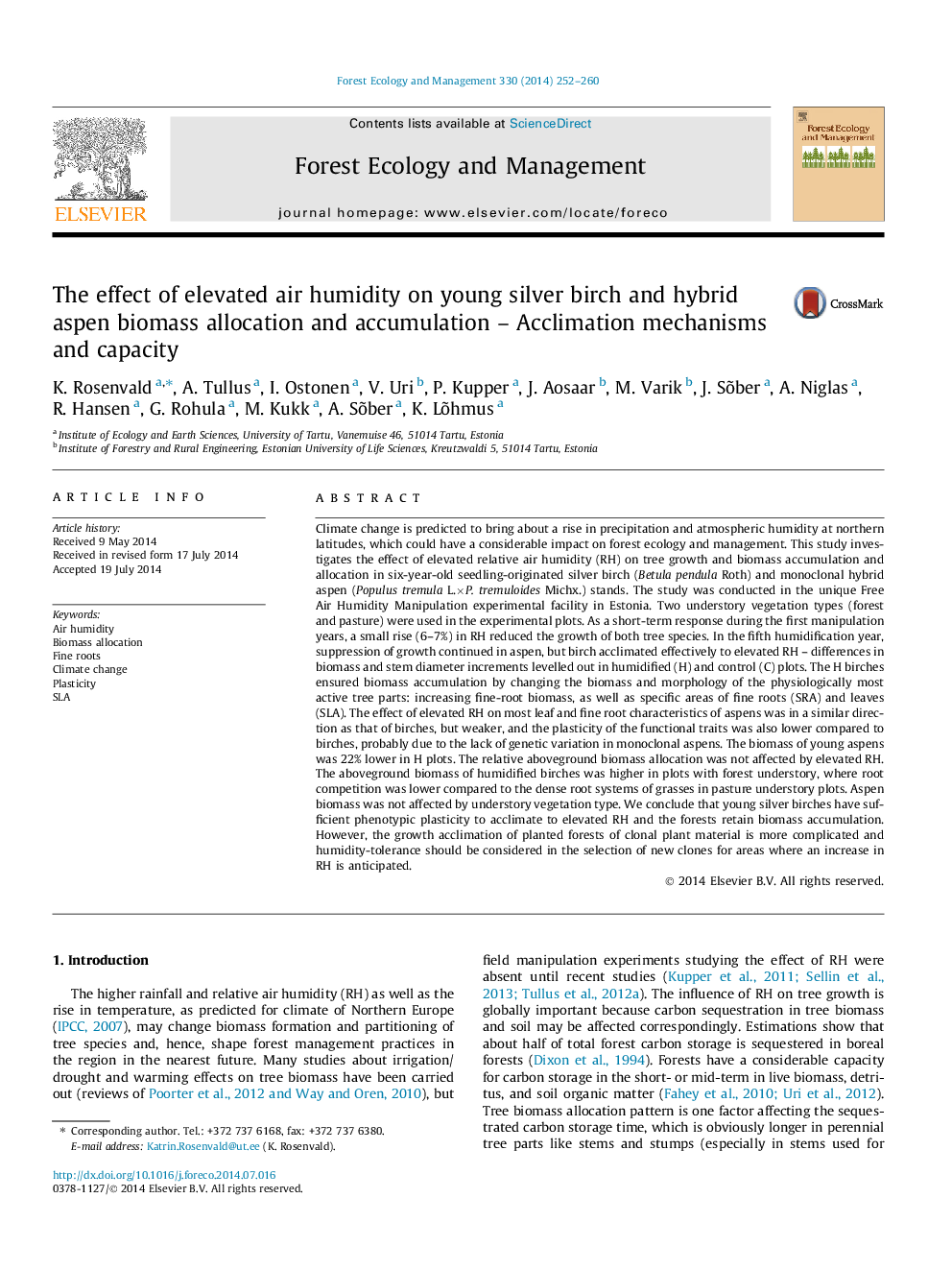| کد مقاله | کد نشریه | سال انتشار | مقاله انگلیسی | نسخه تمام متن |
|---|---|---|---|---|
| 6543365 | 159196 | 2014 | 9 صفحه PDF | دانلود رایگان |
عنوان انگلیسی مقاله ISI
The effect of elevated air humidity on young silver birch and hybrid aspen biomass allocation and accumulation - Acclimation mechanisms and capacity
ترجمه فارسی عنوان
تاثیر رطوبت هوا بر جوانه و جوانه گلدان جوان جوانه زنی و تجمع زیست توده هیبریدی آسیا - سازوکارهای تکمیلی و ظرفیت
دانلود مقاله + سفارش ترجمه
دانلود مقاله ISI انگلیسی
رایگان برای ایرانیان
کلمات کلیدی
موضوعات مرتبط
علوم زیستی و بیوفناوری
علوم کشاورزی و بیولوژیک
بوم شناسی، تکامل، رفتار و سامانه شناسی
چکیده انگلیسی
Climate change is predicted to bring about a rise in precipitation and atmospheric humidity at northern latitudes, which could have a considerable impact on forest ecology and management. This study investigates the effect of elevated relative air humidity (RH) on tree growth and biomass accumulation and allocation in six-year-old seedling-originated silver birch (Betula pendula Roth) and monoclonal hybrid aspen (Populus tremula L.ÃP. tremuloides Michx.) stands. The study was conducted in the unique Free Air Humidity Manipulation experimental facility in Estonia. Two understory vegetation types (forest and pasture) were used in the experimental plots. As a short-term response during the first manipulation years, a small rise (6-7%) in RH reduced the growth of both tree species. In the fifth humidification year, suppression of growth continued in aspen, but birch acclimated effectively to elevated RH - differences in biomass and stem diameter increments levelled out in humidified (H) and control (C) plots. The H birches ensured biomass accumulation by changing the biomass and morphology of the physiologically most active tree parts: increasing fine-root biomass, as well as specific areas of fine roots (SRA) and leaves (SLA). The effect of elevated RH on most leaf and fine root characteristics of aspens was in a similar direction as that of birches, but weaker, and the plasticity of the functional traits was also lower compared to birches, probably due to the lack of genetic variation in monoclonal aspens. The biomass of young aspens was 22% lower in H plots. The relative aboveground biomass allocation was not affected by elevated RH. The aboveground biomass of humidified birches was higher in plots with forest understory, where root competition was lower compared to the dense root systems of grasses in pasture understory plots. Aspen biomass was not affected by understory vegetation type. We conclude that young silver birches have sufficient phenotypic plasticity to acclimate to elevated RH and the forests retain biomass accumulation. However, the growth acclimation of planted forests of clonal plant material is more complicated and humidity-tolerance should be considered in the selection of new clones for areas where an increase in RH is anticipated.
ناشر
Database: Elsevier - ScienceDirect (ساینس دایرکت)
Journal: Forest Ecology and Management - Volume 330, 15 October 2014, Pages 252-260
Journal: Forest Ecology and Management - Volume 330, 15 October 2014, Pages 252-260
نویسندگان
K. Rosenvald, A. Tullus, I. Ostonen, V. Uri, P. Kupper, J. Aosaar, M. Varik, J. Sõber, A. Niglas, R. Hansen, G. Rohula, M. Kukk, A. Sõber, K. Lõhmus,
